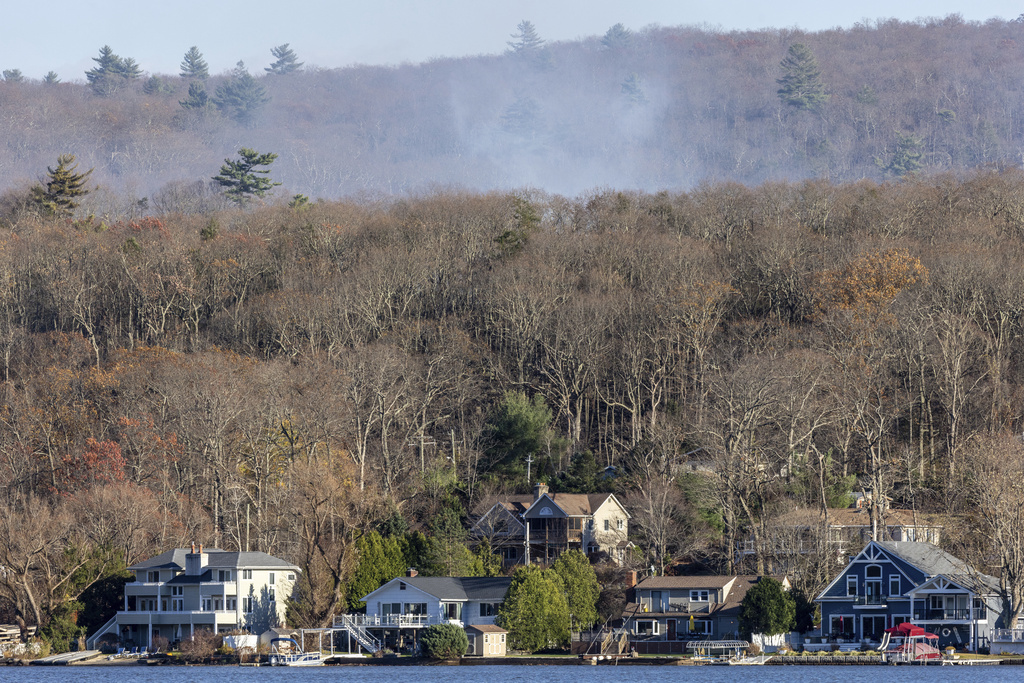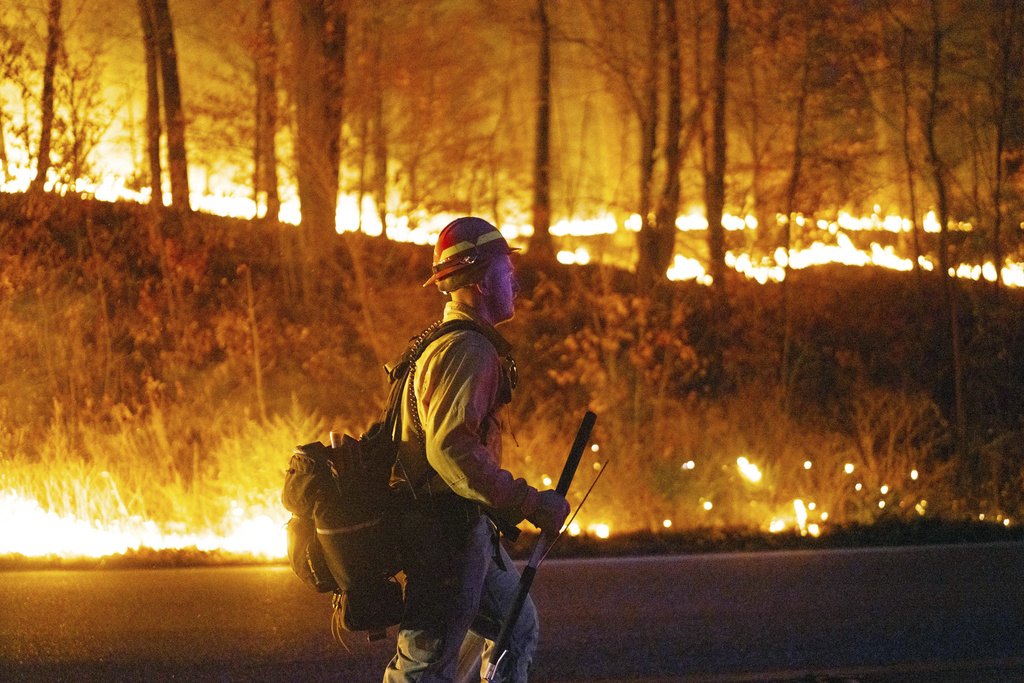Northeast Battles Fires, California Gains Control Over Major Blaze \ Newslooks \ Washington DC \ Mary Sidiqi \ Evening Edition \ The Northeast faces a rising wildfire threat with at least one fatality and several injuries reported as dozens of fires continue to burn amid dry, windy conditions. Massachusetts and New York officials issued fire restrictions in an attempt to mitigate risks, while California’s fire crews have achieved 50% containment on the Mountain Fire in Ventura County. As the drought continues across the East, officials warn that more fires may break out until substantial rain arrives.

Northeast and California Wildfires Quick Looks
- Fire Risks Escalate in Northeast: Fires continue to spread across the Northeast in severe drought conditions, leaving one dead and others injured.
- Massachusetts Warns of Human-Caused Fires: Governor Healey cautions against outdoor fires as all 200 recent fires in Massachusetts were traced to human activity.
- New York Bans Certain Fires Statewide: New York Governor Hochul extends fire restrictions statewide, banning debris and large bonfires.
- California’s Mountain Fire Progress: Fire crews have achieved 50% containment of the Mountain Fire, which has destroyed over 200 structures in Ventura County.
- Relief in Nevada: Light rain helped contain a Nevada fire near Reno, allowing evacuated residents to return.
Deep Look
In Massachusetts, firefighters are contending with multiple fires as the National Weather Service has issued a red flag warning for much of the state and parts of Connecticut. Red flag warnings indicate critical fire conditions, meaning fires can spread quickly and unpredictably. Governor Maura Healey cautioned the public to avoid any outdoor burning, emphasizing the role of human activity in sparking blazes. “Now is not the time to burn leaves. Now is not the time to go outside and light a fire,” Healey advised, as the state grapples with 200 fires reported so far this month, all attributed to human causes.
Massachusetts firefighters are working under extreme conditions, with strong winds compounding the difficulty of controlling flames. The risk is particularly high in wooded areas where dry leaves and debris can easily ignite. Fire crews have sustained injuries in the effort to control these fires, and one fatality has been confirmed after a parks employee was killed in a fire near the New York-New Jersey border. The fire has scorched over 7.5 square miles and remains only 10% contained, according to local authorities. Although no formal evacuations have been mandated, some residents have voluntarily relocated to safer areas, as high winds of up to 25 mph (40 kph) are expected to continue before tapering off midweek.
With dry weather persisting across the Northeast since early fall, meteorologists and wildfire experts warn that the region is at high risk until substantial rainfall or frost arrives. The prolonged lack of rain has left forests and fields exceptionally dry, creating the perfect environment for fire outbreaks. Experts caution that these fires may persist or even increase in frequency if the drought continues, leaving the Northeast in a vulnerable position.
Meanwhile, in California, firefighters are making headway in containing the Mountain Fire in Ventura County, located northwest of Los Angeles. The blaze, which erupted last Wednesday and quickly spread due to strong Santa Ana winds, has destroyed over 200 structures, primarily residential homes. County Fire Chief Dustin Gardner reported on Monday evening that containment had reached 50%, allowing thousands of evacuated residents to start returning to their homes. While the exact cause of the Mountain Fire remains under investigation, fire officials noted that Santa Ana winds combined with dry vegetation fueled its rapid expansion.
California’s neighboring Nevada also faced its own fire emergency south of Reno. High winds quickly spread flames across a fire-prone region, destroying one home and damaging several buildings. However, Nevada firefighters received unexpected assistance from light rain that helped quell the flames, allowing some 200 firefighters to bring the blaze under control and residents to return to their homes.
The contrast between fire responses in the Northeast and California underscores regional differences in preparation and environmental challenges. California, which has long dealt with fire-prone landscapes, has developed specialized firefighting tactics and infrastructure to respond to large-scale blazes. In contrast, the Northeast is less accustomed to widespread fire activity, with firefighting agencies adjusting to what some officials describe as “unusual” conditions for the region.
The coming days are critical for firefighting efforts, as strong winds in the Northeast may subside, giving crews an opportunity to control active fires and prevent new ones. However, with little rain in the forecast, officials remain concerned about the ongoing fire risk. The National Interagency Fire Center has listed parts of the Northeast as high-risk zones, urging vigilance in areas already impacted by the current outbreaks.
As California works toward containing the Mountain Fire and allowing evacuees to return, the Northeast grapples with a fire season that is stretching resources and prompting new policies to safeguard communities. The fires across the U.S. reflect growing concerns over wildfire risks as climate change intensifies dry and windy conditions, creating fertile ground for fire hazards in regions both accustomed and unaccustomed to such events.
Northeast Battles Northeast Battles Northeast Battles Northeast Battles







